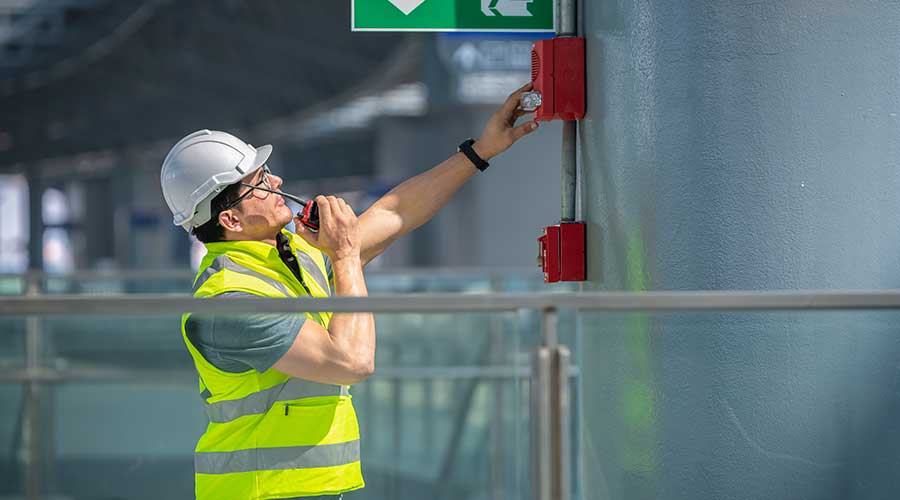When danger strikes, people need to be alert and ready to act. Fires are just one of these dangers. Fortunately, there is technology to both alert and actively fight fires: fire alarms and sprinklers. To keep these working properly in case danger arises, maintenance is necessary. In this manufacturer roundtable, Healthcare Facilities Today speaks with leading fire alarms and sprinklers manufacturers about when healthcare facility managers should maintenance their alarms and sprinklers.
When should sprinklers and alarm systems receive maintenance?
“Systems should receive ITM in accordance with the codes that apply to the type of systems and types of facilities in which they are installed. NFPA 25 is just one of the standards that might apply. Additionally, whenever an issue presents itself – such as a dripping wet system pipe or a broken dry system auxiliary drain – the system should be fixed immediately.”
—George McHugh, vice president, AGF Manufacturing, Inc.
“Fire alarm systems must be inspected, tested and maintained in accordance with NFPA 72 National Fire Alarm and Signaling Code. Similar to NFPA 25, NFPA 72 provides various frequencies for the inspection, testing and maintenance of fire alarm system components. NFPA 25 and NFPA 72 address common components such as fire sprinkler control valves, fire sprinkler waterflow indicators and the vast variety of fire alarm initiating devices like manual pull stations and smoke detectors. However, the frequency and methods for inspecting, testing and maintaining these components might differ between the standards. The key, especially in a healthcare environment, is to have a very robust and accurate inspection, test and maintenance program for all types of life safety systems.”
—Larry Rietz, vice president and global service line leader for fire detection and alarm, Jensen Hughes
“Sprinkler systems should be inspected, tested and maintained in accordance with NFPA 25 Standard for the Inspection, Testing and Maintenance of Water-Based Fire Protection Systems. NFPA 25 requires quarterly, semi-annual, and annual inspection, testing and maintenance activities. The better a system is maintained, the more reliable it will be. Proper inspection, testing and maintenance of fire sprinkler systems is critical since the systems remain dormant for long periods of time but must be relied upon in the event of a fire.”
—Donald Hopkins, Jr., vice president of process improvement, Jensen Hughes
Jeff Wardon, Jr. is the assistant editor for the facilities market.

 Contaminants Under Foot: A Closer Look at Patient Room Floors
Contaminants Under Foot: A Closer Look at Patient Room Floors Power Outages Largely Driven by Extreme Weather Events
Power Outages Largely Driven by Extreme Weather Events Nemours Children's Health Opens New Moseley Foundation Institute Hospital
Nemours Children's Health Opens New Moseley Foundation Institute Hospital Code Compliance Isn't Enough for Healthcare Resilience
Code Compliance Isn't Enough for Healthcare Resilience Ribbon Cutting Marks First Phase Completion for New Montefiore Einstein Facility
Ribbon Cutting Marks First Phase Completion for New Montefiore Einstein Facility